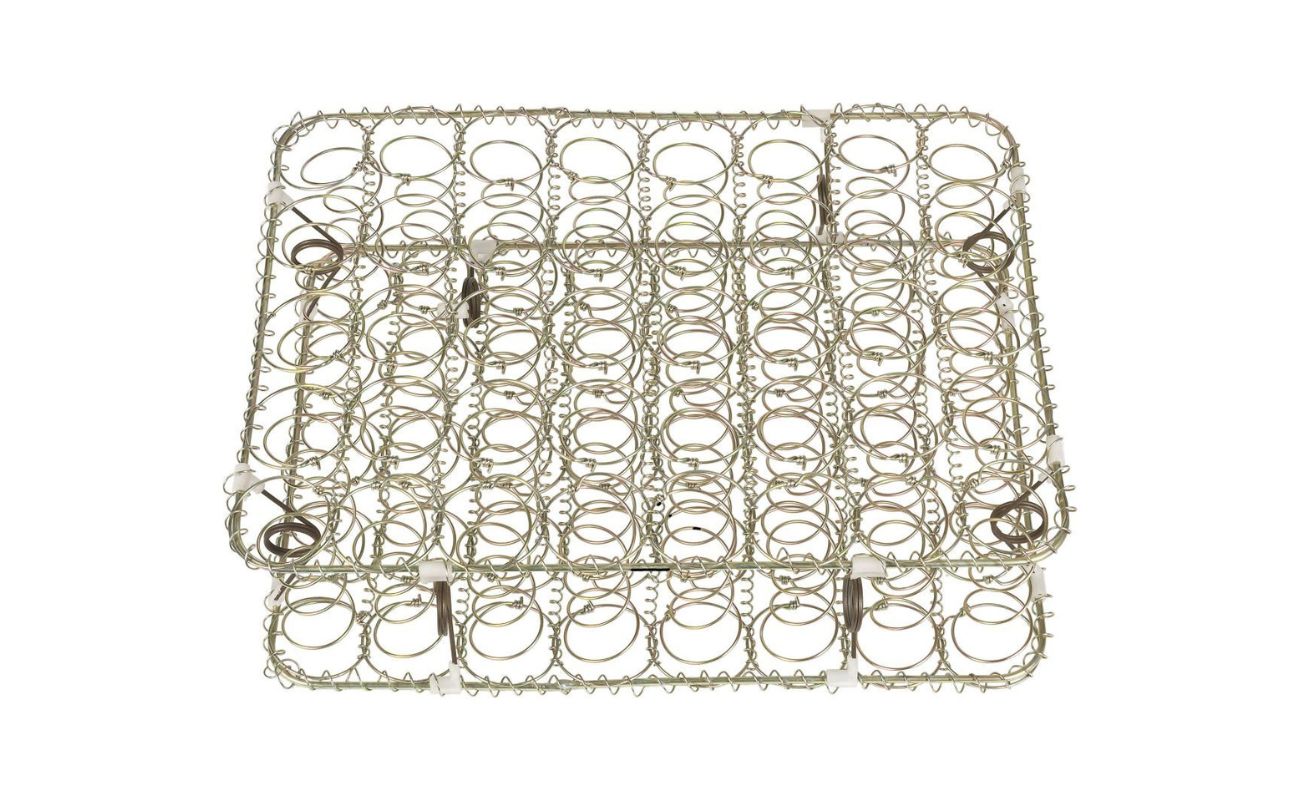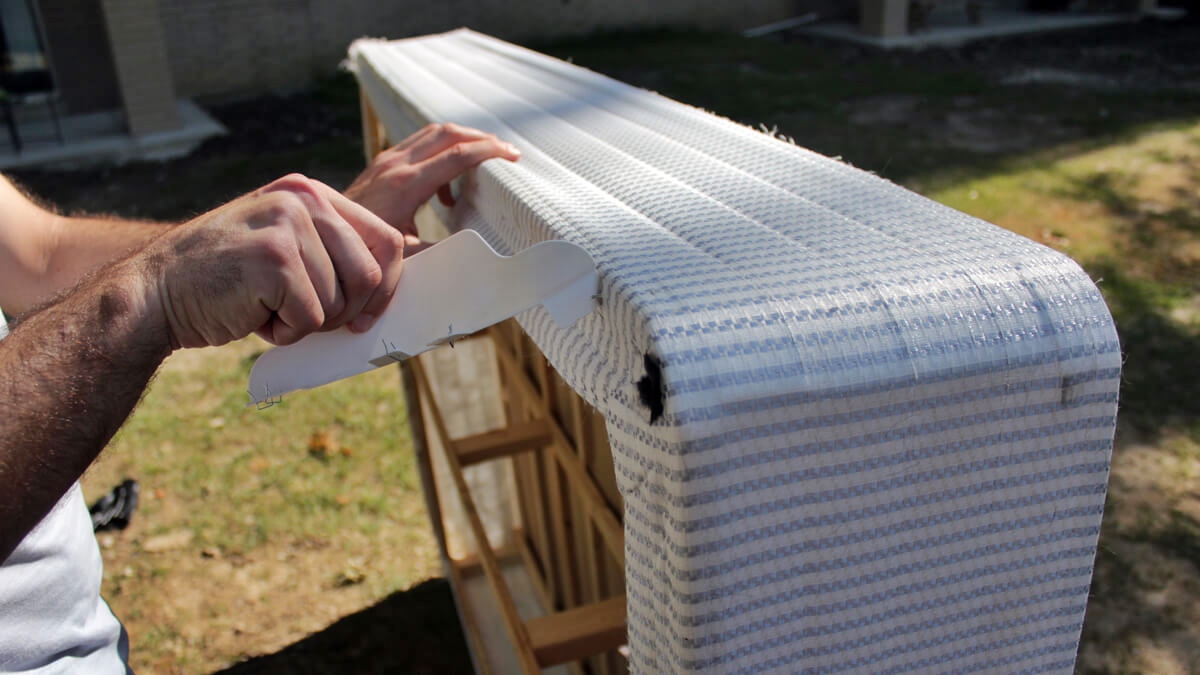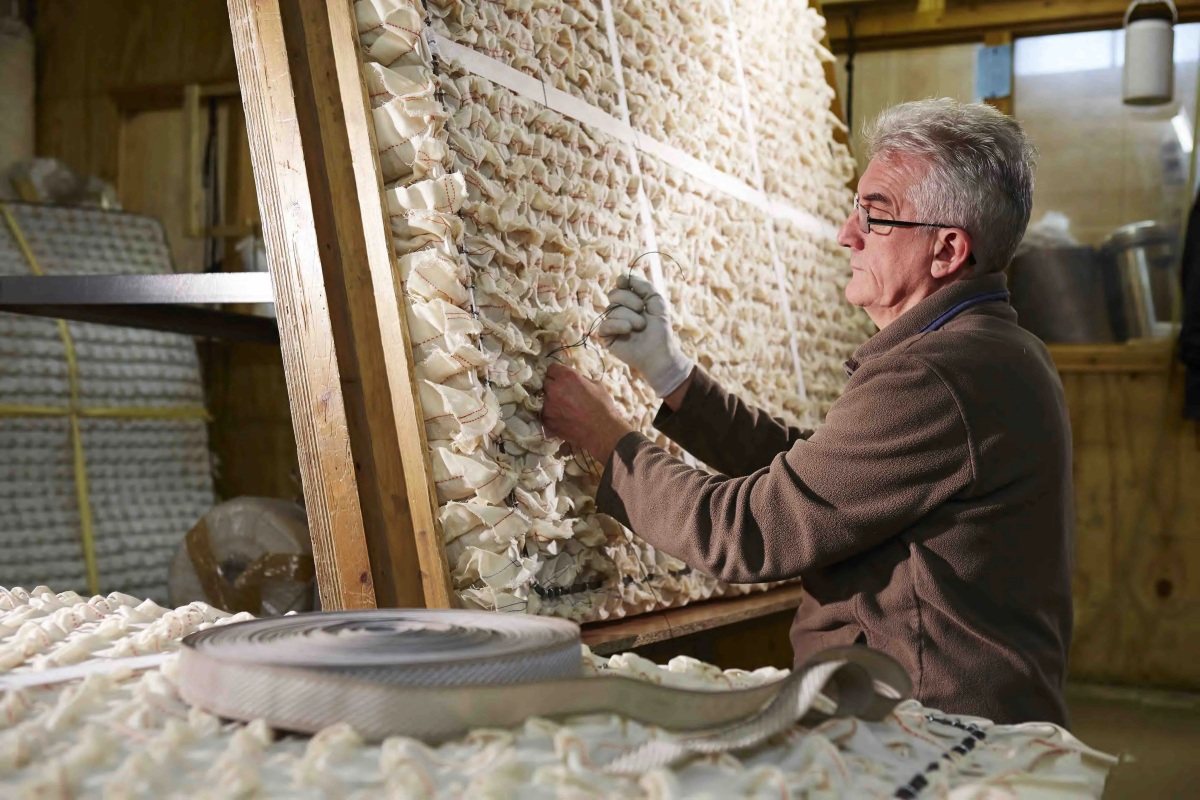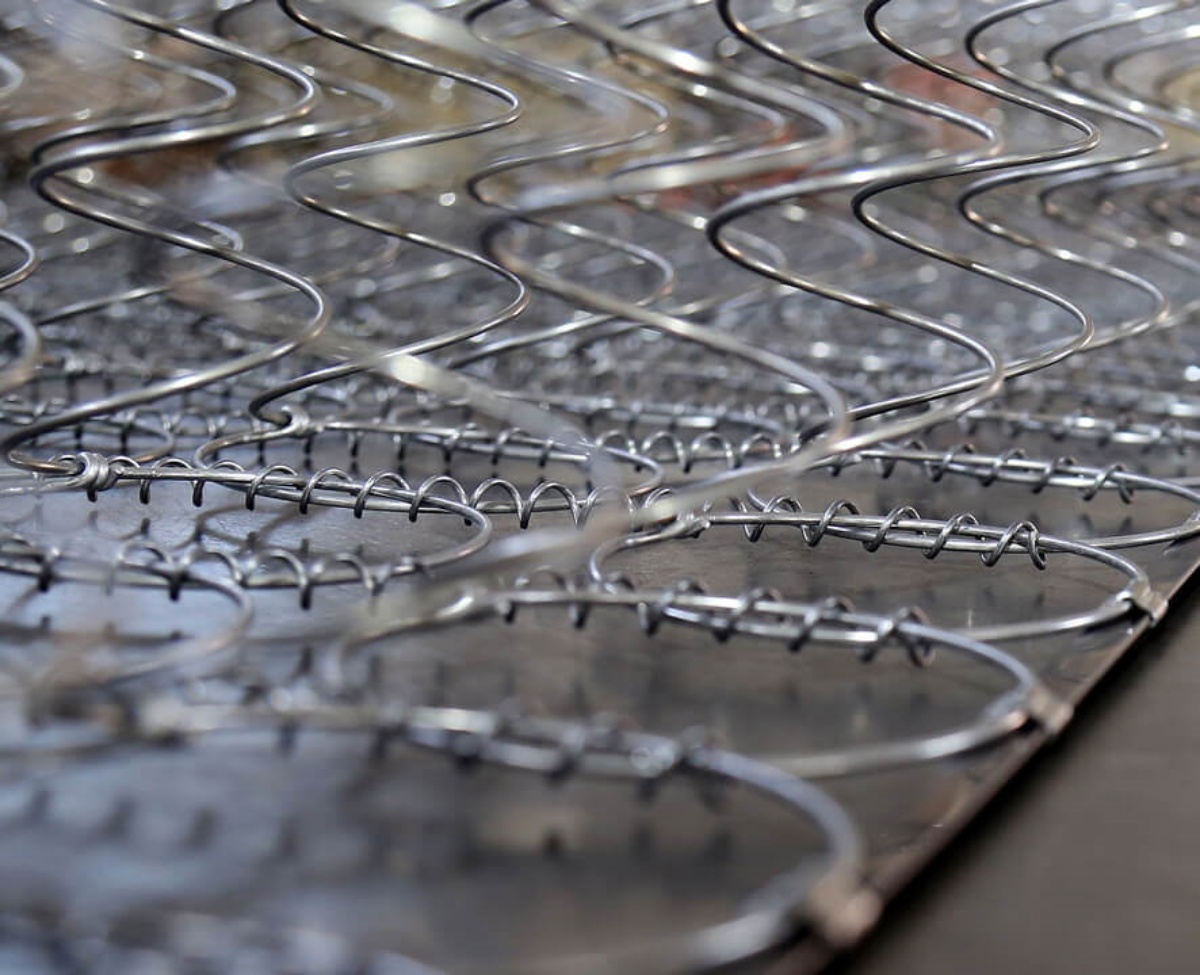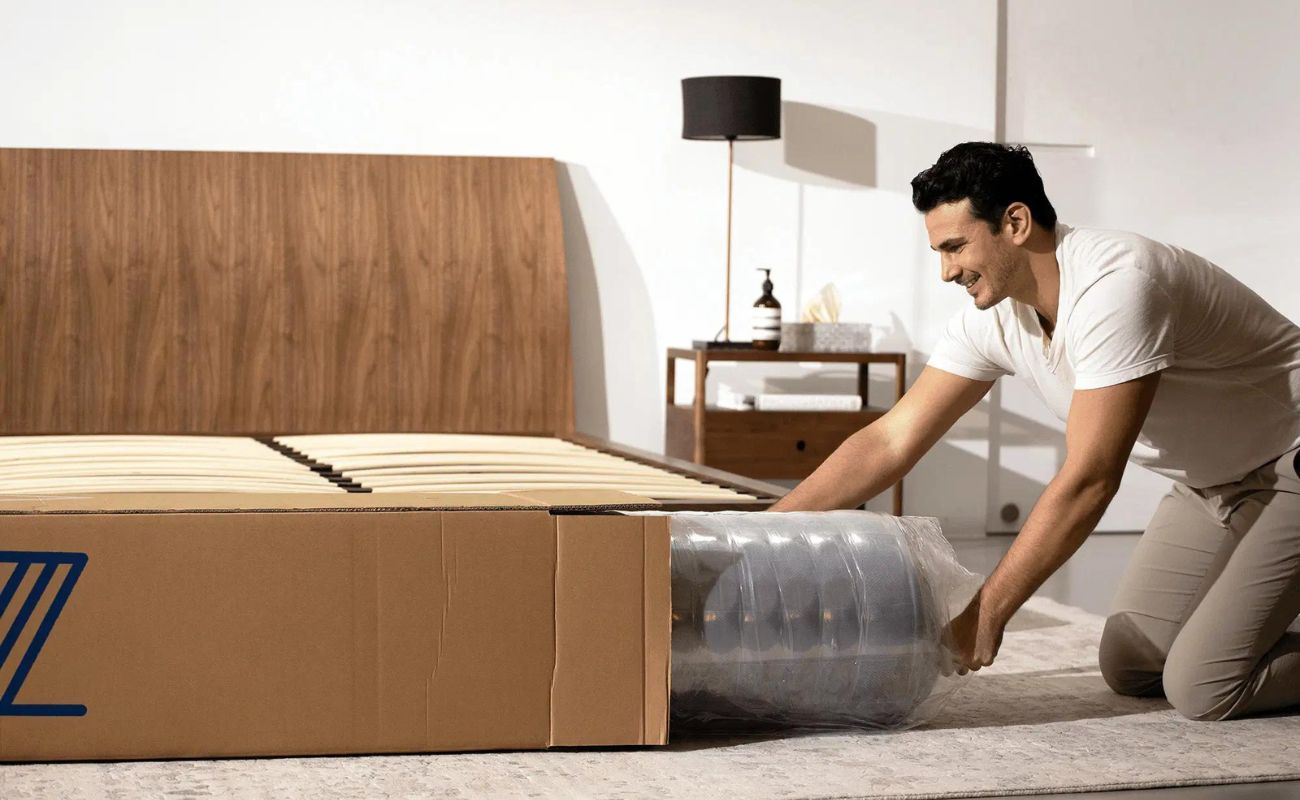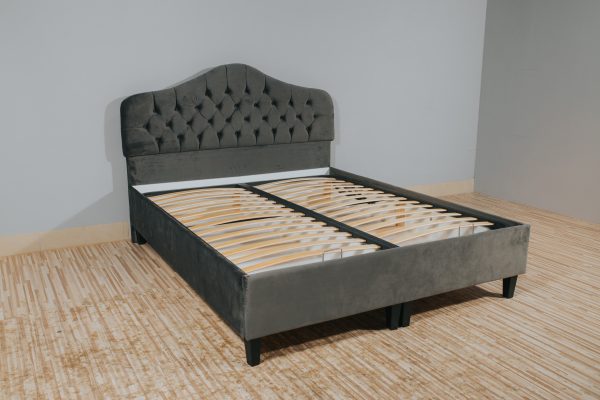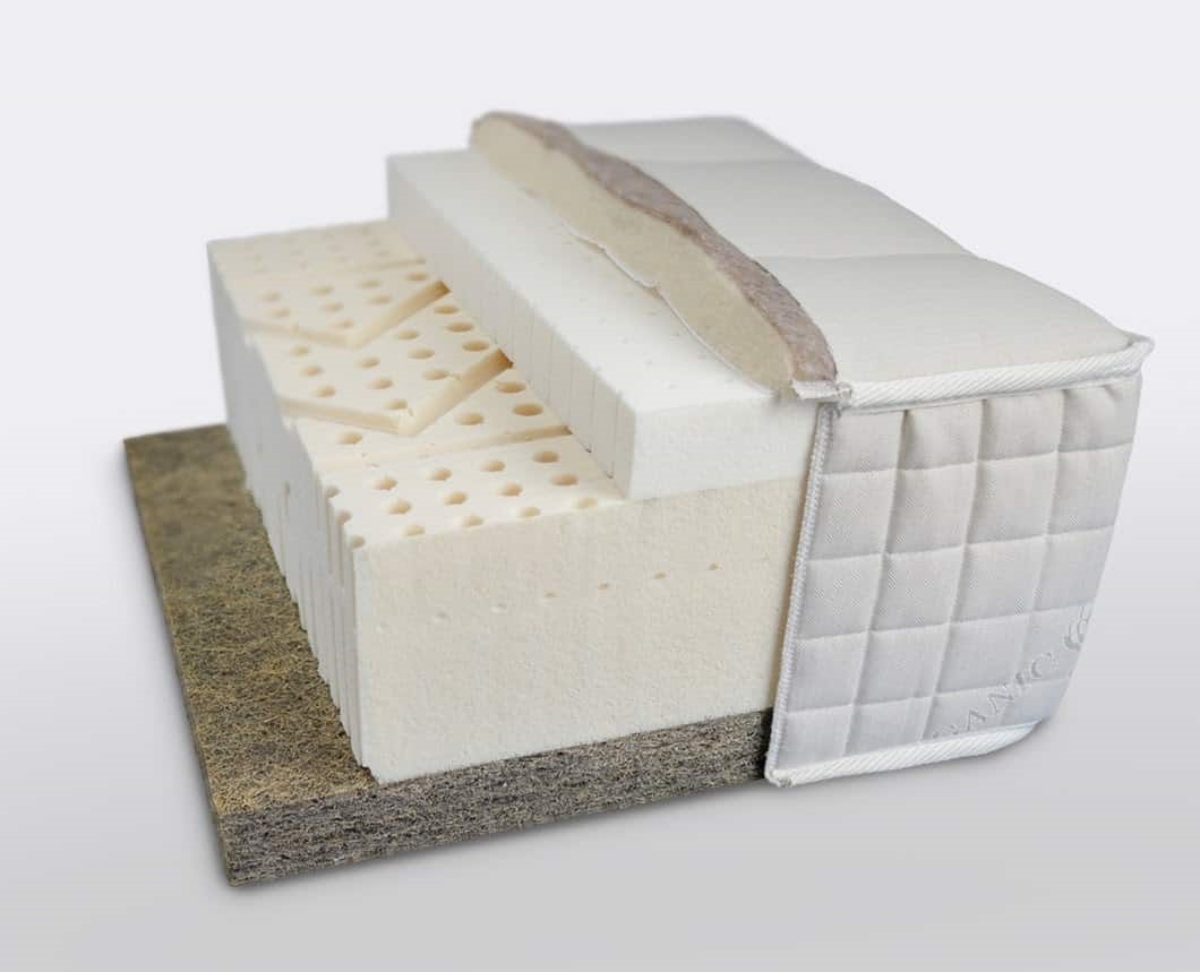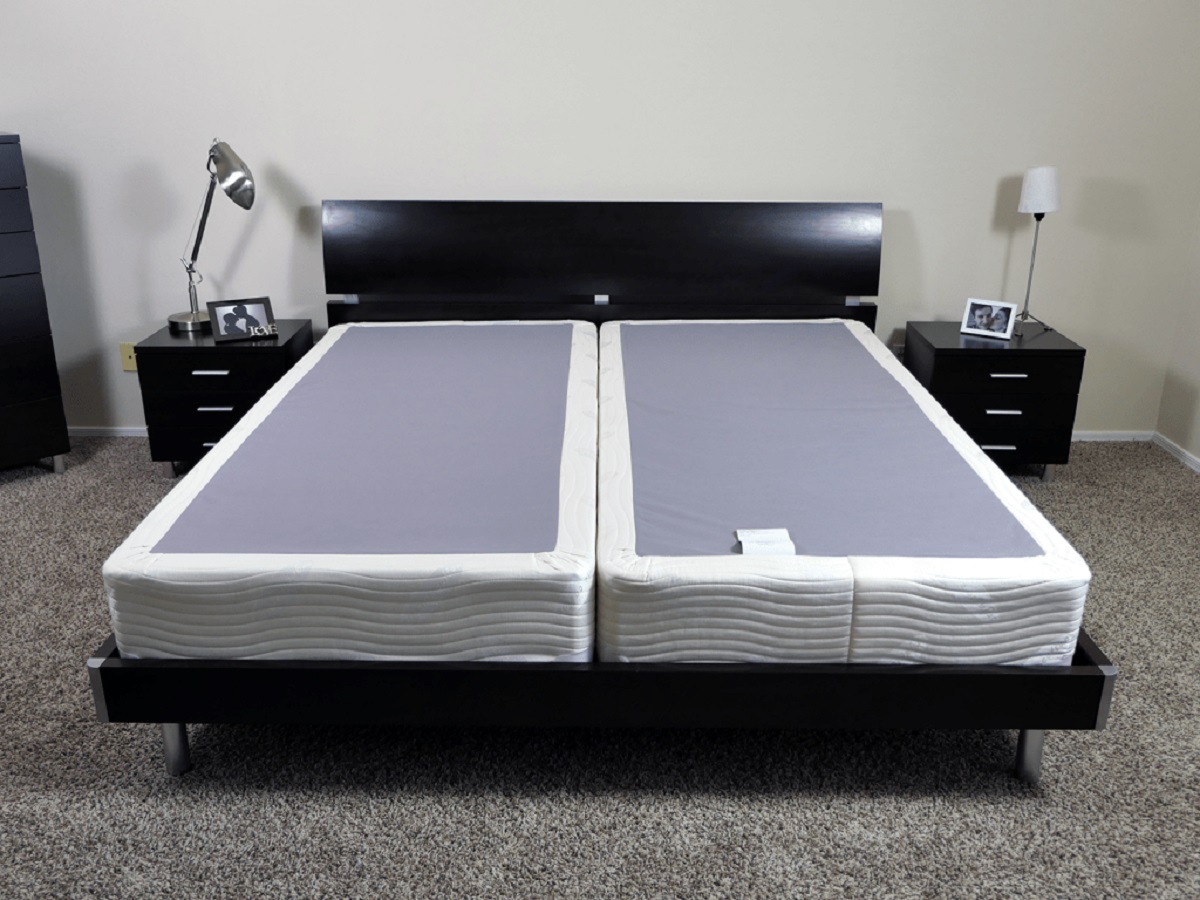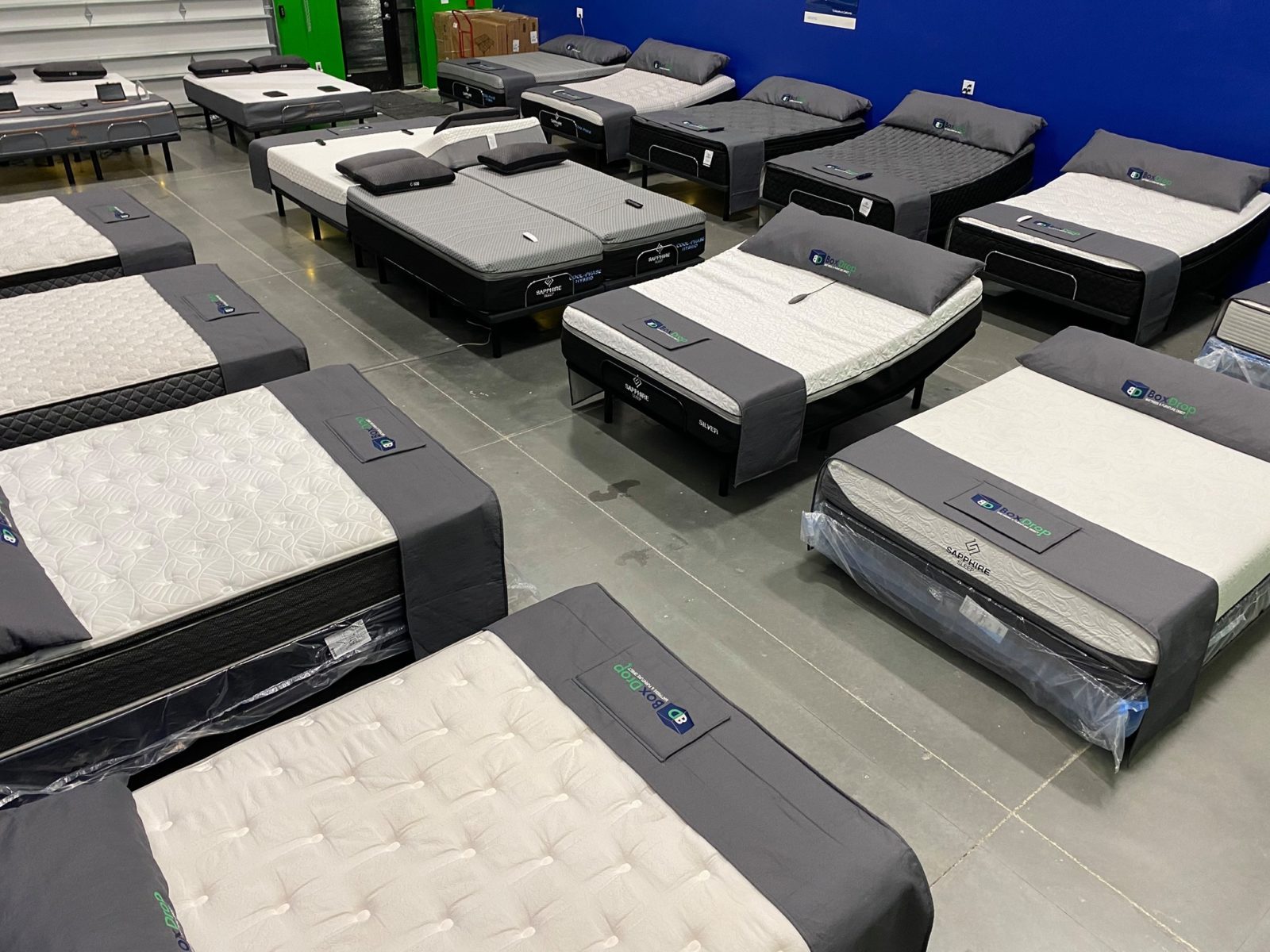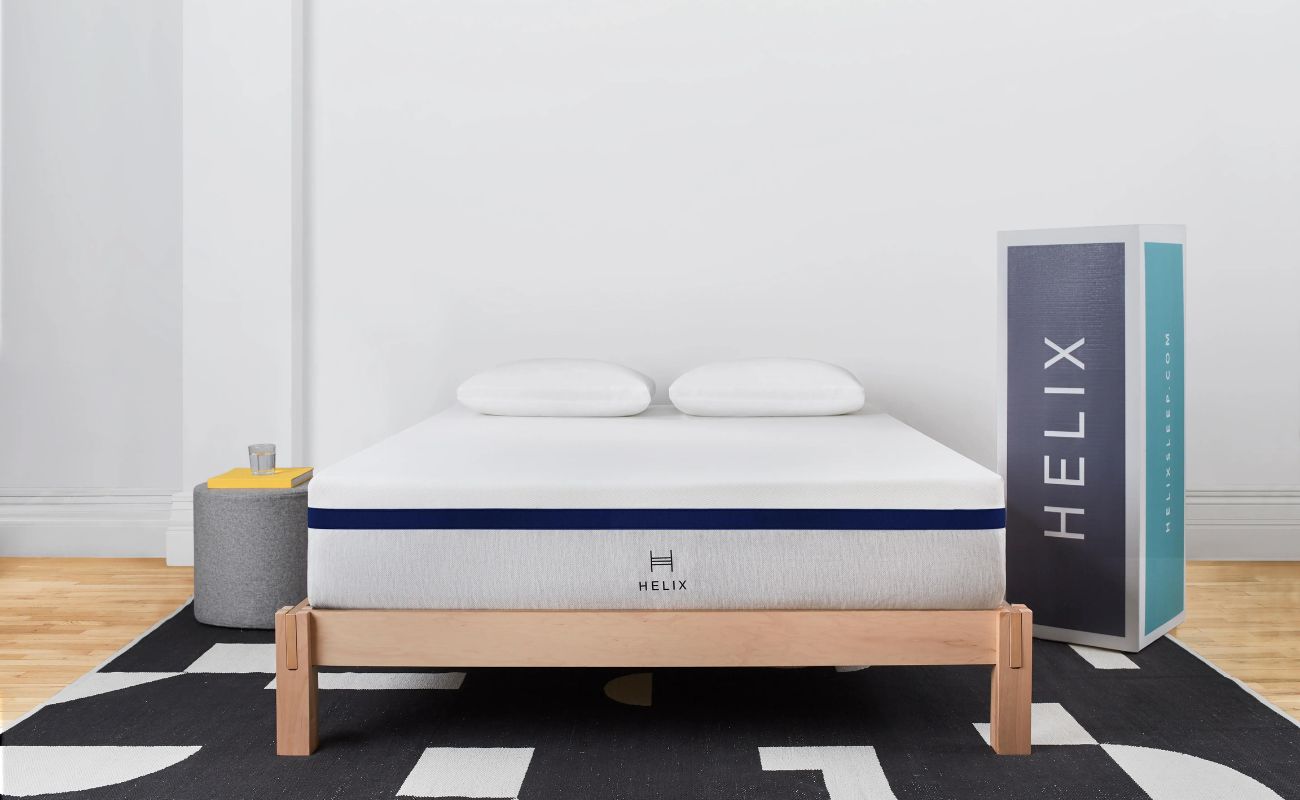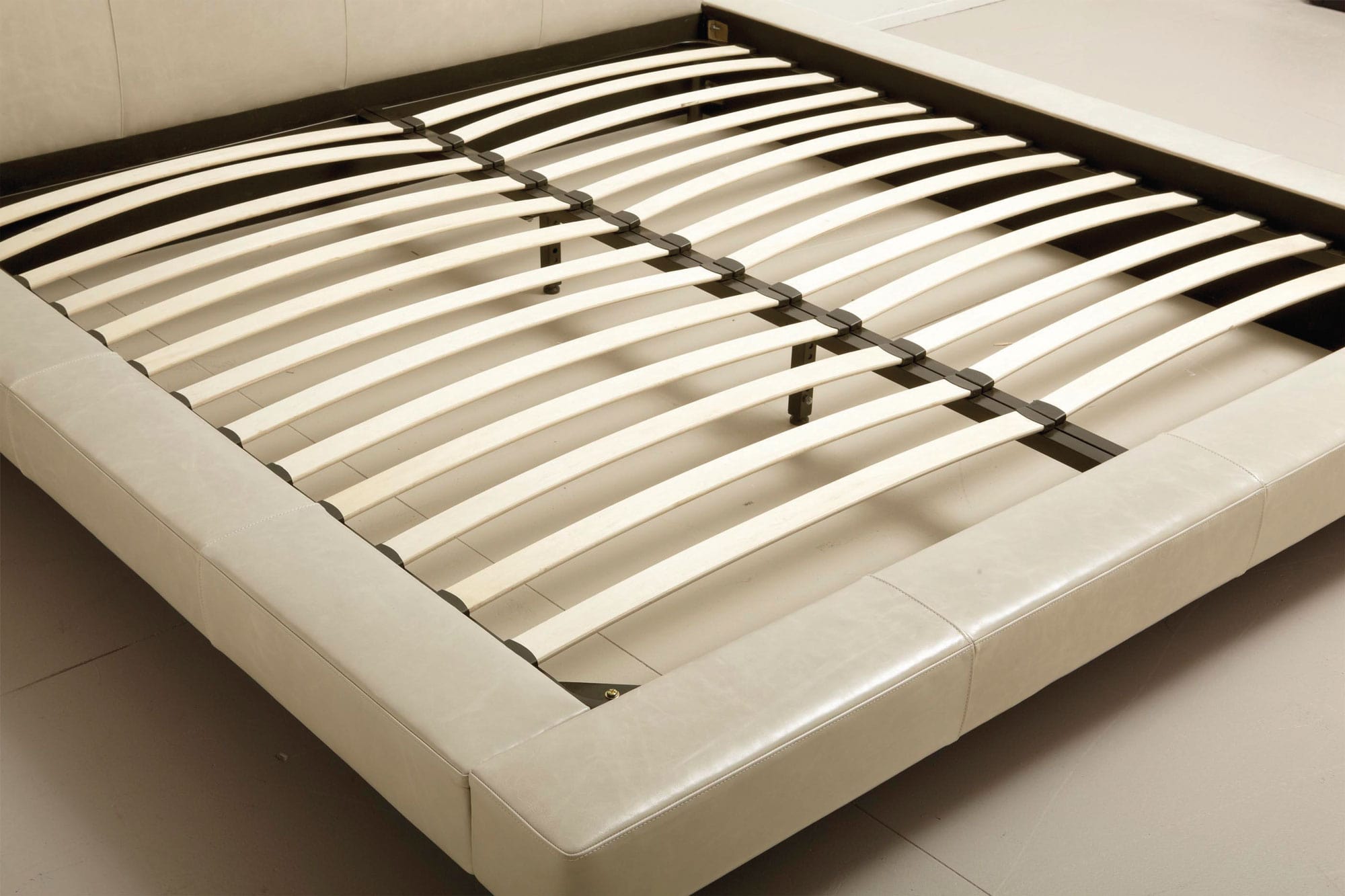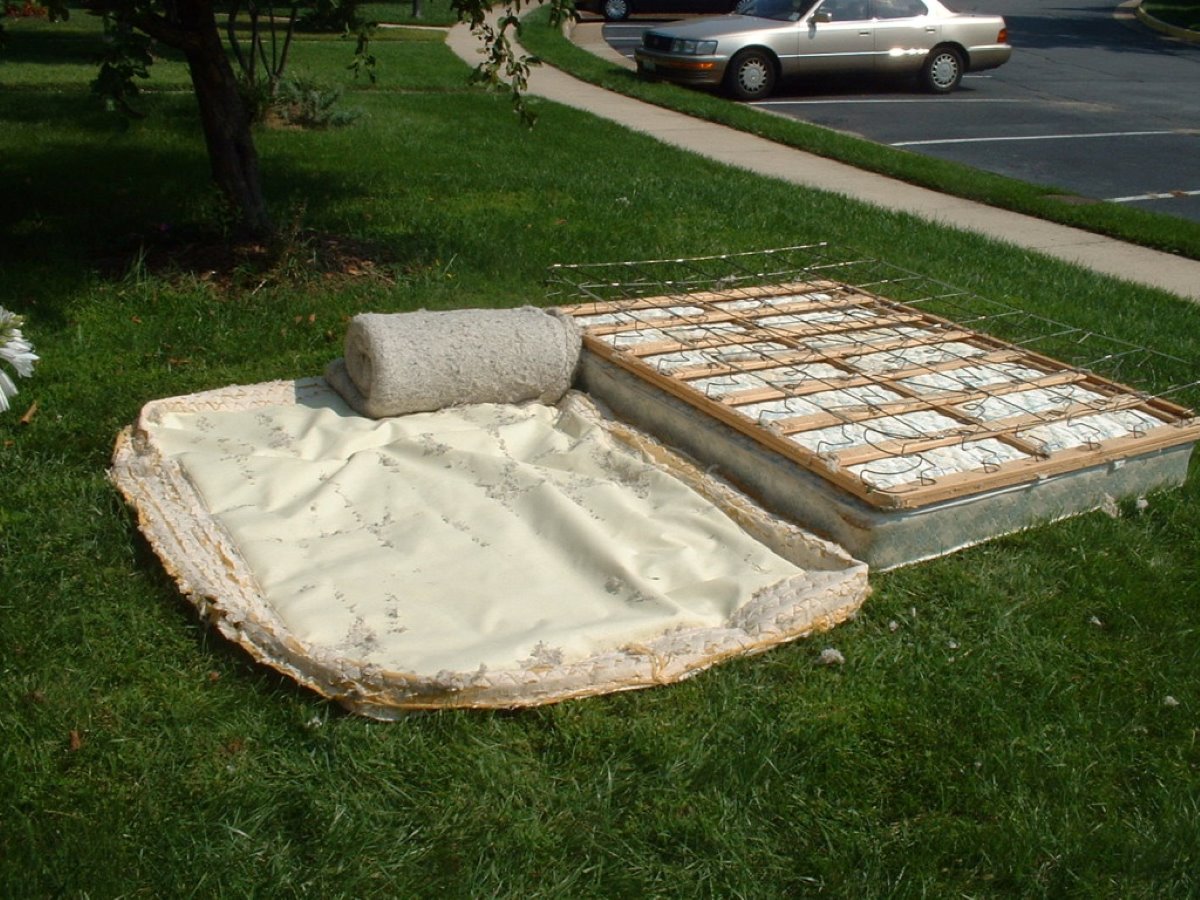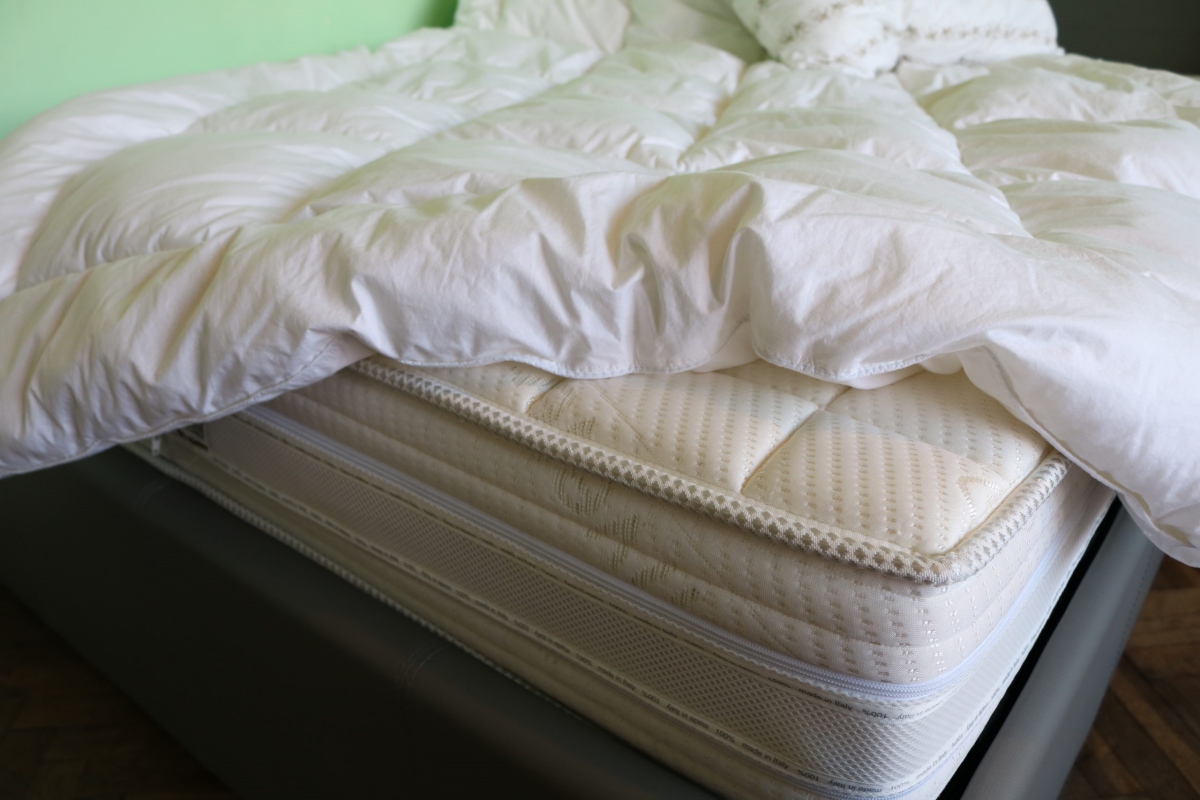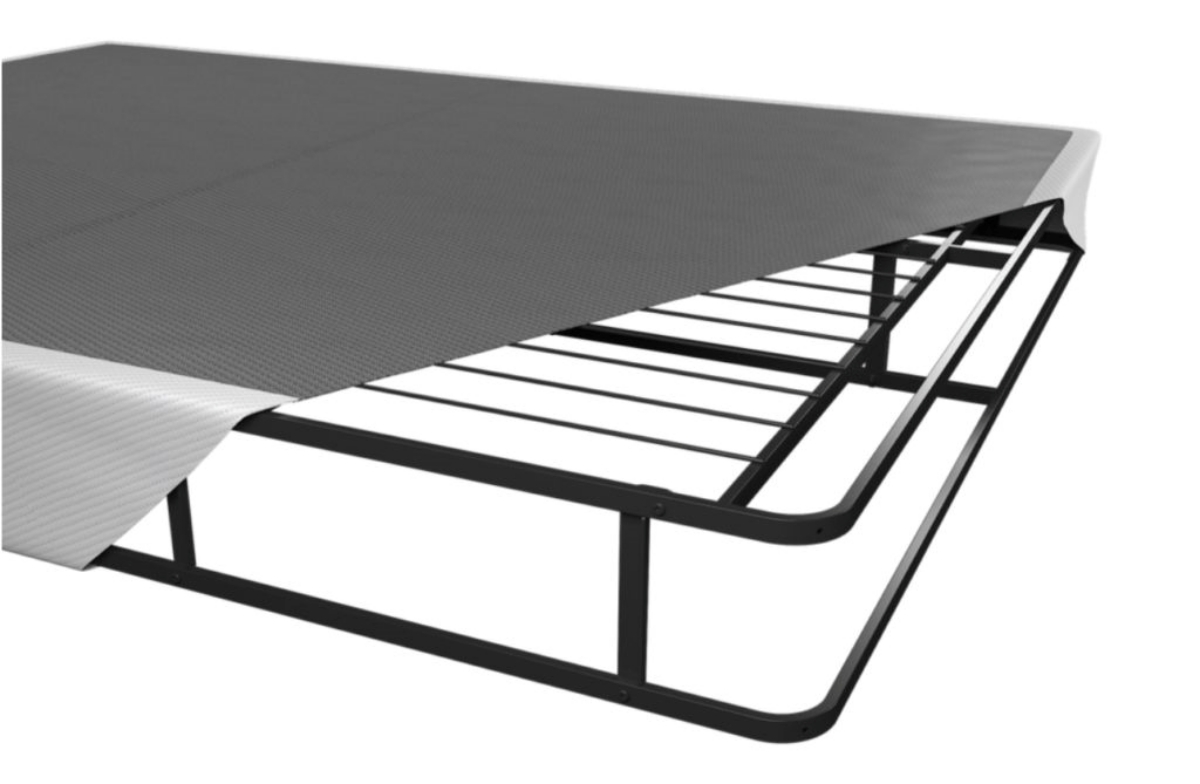Home>Furniture>Bedroom Furniture>What Is A Box Spring Mattress
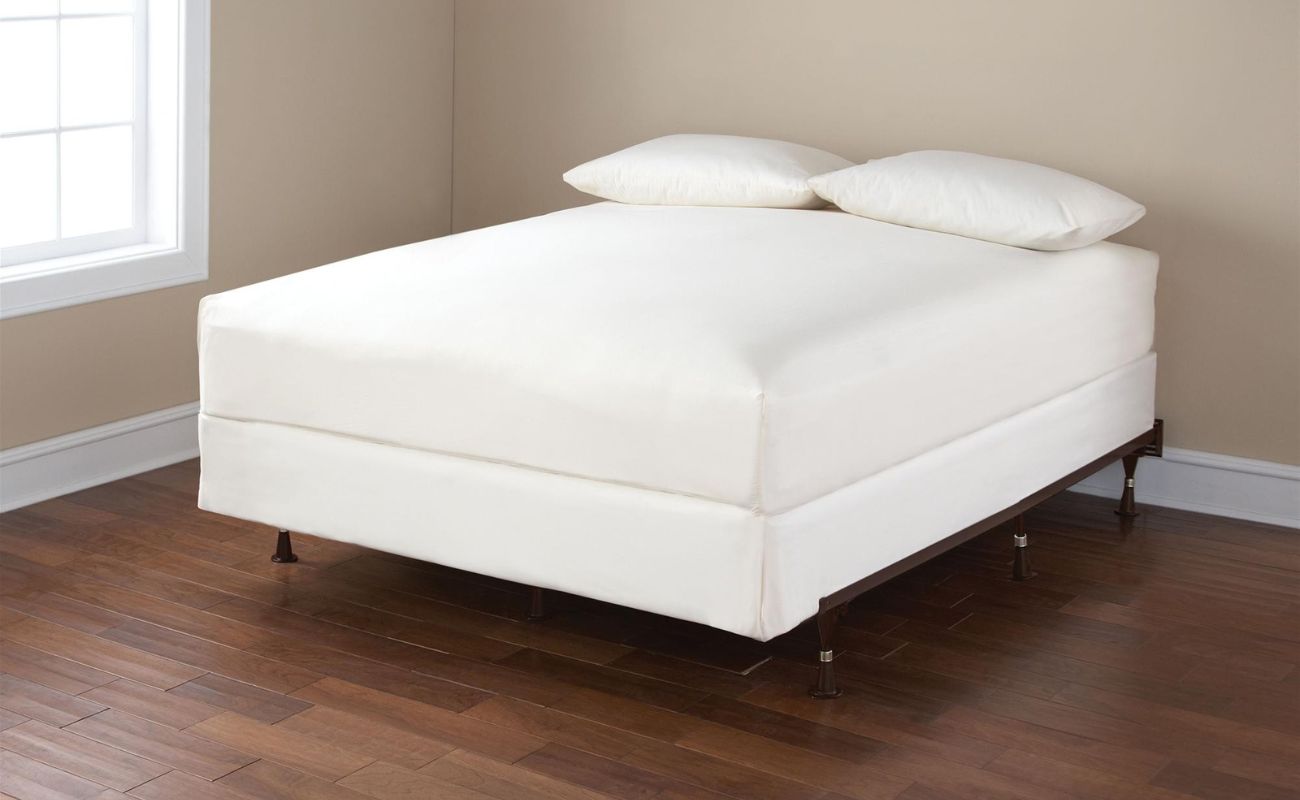

Bedroom Furniture
What Is A Box Spring Mattress
Modified: February 25, 2024
Discover the benefits of a box spring mattress for your bedroom furniture. Improve your sleep quality and enhance the comfort of your bed with a high-quality box spring.
(Many of the links in this article redirect to a specific reviewed product. Your purchase of these products through affiliate links helps to generate commission for Storables.com, at no extra cost. Learn more)
Introduction
When it comes to furnishing a bedroom, one of the most important pieces of furniture to consider is the mattress. However, the mattress alone is not enough to ensure a comfortable sleeping experience. To truly optimize your sleep, you need to pair your mattress with the right foundation. And that is where a box spring mattress comes into play.
A box spring mattress is a specially designed secondary support system that sits between the mattress and the bed frame. It has a sturdy wooden or metal frame covered in fabric and is typically filled with springs or coils. This unique construction allows the box spring mattress to provide additional support, absorb shock, and extend the lifespan of the mattress.
Over the years, the design and construction of the box spring mattress have evolved to provide better comfort and support. Today, you can find box spring mattresses that are compatible with various types of mattresses, including memory foam, latex, and hybrid mattresses. But what sets a box spring mattress apart from other types of foundations? Let’s delve deeper and explore the construction, benefits, drawbacks, and alternatives to help you make an informed decision.
Next, we will discuss the definition of a box spring mattress and its purpose in more detail.
Key Takeaways:
- A box spring mattress provides improved support, comfort, and durability, making it a versatile foundation option for various mattress types. However, it may not be necessary for all mattresses and can be bulky and noisy.
- Consider alternative options such as platform beds, adjustable beds, bunkie boards, slatted foundations, and solid foundations to find the ideal support system that suits your specific mattress type and personal preferences.
Read more: Where To Buy A Box Spring Mattress
Definition of a Box Spring Mattress
A box spring mattress, also known as a box spring, is a foundation that supports and extends the life of a mattress. It is designed to sit between the mattress and the bed frame, providing additional support, stability, and shock absorption. The name “box spring” is derived from its original construction, which included a box-like wooden frame filled with springs, hence the term “box spring.”
The primary function of a box spring mattress is to elevate the mattress, providing a comfortable and supportive base for sleep. It helps distribute weight evenly across the mattress, preventing sagging and ensuring optimal comfort. It also acts as a buffer, reducing the wear and tear on the mattress by absorbing impact from movement and body weight.
Traditionally, box spring mattresses were constructed using a series of metal coils or springs. These springs provided both support and flexibility, allowing the mattress to contour to the body’s shape and relieve pressure points. Today, box spring mattresses can be found with various types of support systems, including pocketed coils, pocketed springs, or even foam cores. This allows for customization and compatibility with different types of mattresses.
Aside from its support function, a box spring mattress also plays a role in promoting airflow and ventilation. The open design of the box spring allows air to circulate between the mattress and the foundation, preventing the buildup of moisture and helping to regulate temperature during sleep.
It’s important to note that not all mattresses require a box spring. Platform beds, adjustable beds, and certain types of mattresses, like memory foam or latex mattresses, may not require a traditional box spring. In these cases, alternative foundations or platforms can be used to support the mattress.
In the next section, we will explore the construction and components of a box spring mattress to better understand its inner workings.
Construction and Components of a Box Spring Mattress
A box spring mattress is a carefully constructed foundation that consists of several components working together to provide support and enhance the comfort of your mattress. Understanding the construction and components of a box spring mattress can help you make an informed decision when choosing the right one for your bedroom.
The frame of a box spring mattress is typically made of wood or metal. Wooden frames are commonly made from sturdy hardwood, such as oak or pine, while metal frames are usually constructed from steel. The frame provides the structural integrity and stability of the box spring.
Within the frame, the core of the box spring mattress consists of a series of springs or coils. The coils are usually made of tempered steel for durability and added strength. These coils are interconnected and evenly distributed to provide consistent support across the entire surface of the mattress.
Some box spring mattresses also feature a layer of padding on top of the springs. This padding, often made of foam or fiberfill, adds an extra layer of cushioning to enhance comfort. It helps to provide a plush surface and prevent the feel of the springs from being too prominent.
On top of the padding, a layer of fabric or upholstery covers the box spring mattress. This fabric can vary in thickness and material, providing both aesthetic appeal and protection for the underlying components. It is important to choose a fabric that is durable and breathable to allow for proper airflow and ventilation.
The fabric covering is often quilted or tufted, creating a visually appealing pattern and adding further comfort and support to the mattress. Quilting involves stitching the fabric to the underlying layers, while tufting involves pulling the fabric tightly and securing it with buttons or stitches.
Together, these components work harmoniously to provide a supportive and comfortable foundation for your mattress. The frame ensures stability and durability, the coils offer support and contouring, the padding adds cushioning, and the fabric provides a protective and visually appealing cover.
In the following section, we will explore the benefits of using a box spring mattress in your bedroom.
Benefits of Using a Box Spring Mattress
Choosing a box spring mattress can offer several benefits that can enhance your sleep experience and prolong the lifespan of your mattress. Here are some of the key advantages of using a box spring mattress:
- Improved Support: One of the primary advantages of a box spring mattress is its ability to provide enhanced support for your mattress. The combination of a sturdy frame and a layer of springs or coils helps distribute weight evenly, preventing sagging and ensuring proper spinal alignment during sleep.
- Added Comfort: The padding and fabric layer on top of the springs add an additional layer of cushioning, creating a more comfortable sleeping surface. This can help relieve pressure points and reduce discomfort, promoting a more restful and rejuvenating sleep.
- Enhanced Durability: A box spring mattress acts as a buffer between your mattress and the bed frame, absorbing shock and reducing wear and tear on the mattress. By providing a supportive foundation, it helps extend the lifespan of your mattress, allowing you to enjoy its comfort and support for a longer period of time.
- Better Airflow: The open design of a box spring allows for improved air circulation between the mattress and the foundation. This helps to prevent the buildup of heat and moisture, promoting a cooler and more comfortable sleep environment.
- Noisy Dampening: A box spring mattress can also help dampen noise and reduce motion transfer. The springs or coils absorb movements and vibrations, minimizing disturbances caused by tossing, turning, or shifting positions during sleep. This can be particularly beneficial for individuals who share a bed.
- Versatility: Box spring mattresses are compatible with various types of mattresses, including memory foam, latex, and hybrid mattresses. This versatility allows you to pair the box spring with the mattress of your choice, ensuring a customized sleep experience that meets your specific comfort and support needs.
By utilizing a box spring mattress, you can experience the combined benefits of improved support, added comfort, enhanced durability, better airflow, noise dampening, and versatility. These advantages contribute to a more comfortable and restorative sleep, ensuring you wake up feeling refreshed and ready to tackle the day.
In the next section, we will explore the drawbacks of using a box spring mattress to provide a well-rounded understanding of this foundation option.
Drawbacks of Using a Box Spring Mattress
While there are numerous benefits to using a box spring mattress, it’s important to consider any potential drawbacks before making a final decision. Here are a few key drawbacks to keep in mind:
- Height and Bulkiness: Box spring mattresses tend to be taller and bulkier than other types of foundations. This can make them difficult to move or maneuver, especially in tight spaces or narrow staircases. Additionally, their height may require you to adjust the overall height of your bed frame and bedding.
- Compatibility: Although box spring mattresses are versatile and can be used with various types of mattresses, not all mattresses require a box spring. Some modern mattresses, such as memory foam or hybrid mattresses, are designed to be used on a solid and flat surface. Using a box spring with these types of mattresses may affect their performance and negate their intended benefits.
- Noisy: Box spring mattresses that utilize springs or coils can produce noise when pressure is applied, such as when you get in and out of bed or shift positions during sleep. The noise can be disruptive and potentially disturb your sleep or that of your partner.
- Cost: Box spring mattresses can be more expensive compared to alternative foundation options. However, it’s important to remember that a box spring mattress can help prolong the life of your mattress, potentially offsetting the cost in the long run.
- Hygiene Concerns: The open design of box spring mattresses can make them susceptible to collecting dust, allergens, and pests. Regular cleaning and maintenance are essential to minimize these concerns and ensure a clean and healthy sleep environment.
While these drawbacks should be considered, it is worth noting that many of these concerns can be mitigated or overcome with proper care and consideration. Prioritize your specific needs and preferences when deciding whether a box spring mattress is the right choice for you.
In the next section, we will discuss how to choose the right box spring mattress that aligns with your needs and preferences.
When purchasing a box spring mattress, make sure to measure the dimensions of your bed frame to ensure a proper fit. Additionally, consider the height of the box spring to ensure it aligns with the overall aesthetic of your bedroom.
How to Choose the Right Box Spring Mattress
Choosing the right box spring mattress is essential to ensure optimal comfort, support, and compatibility with your mattress. Here are some factors to consider when making your selection:
- Size: Ensure that the dimensions of the box spring mattress match the size of your mattress and bed frame. Whether you have a twin, full, queen, or king-size mattress, select a box spring that matches the same size to ensure a proper fit.
- Support System: Pay attention to the support system of the box spring mattress. While traditional coil systems are common, newer designs incorporate pocketed coils, foam cores, or a combination of both. Choose a support system that aligns with your comfort preferences and the specific requirements of your mattress.
- Materials: Consider the materials used in the construction of the box spring mattress. Opt for a sturdy frame made of high-quality wood or metal for durability. Additionally, choose a fabric cover that is breathable, hypoallergenic, and easy to clean.
- Compatibility: Determine if your mattress requires a box spring or if it is designed to be used on a platform bed or adjustable bed frame. Some mattresses, such as memory foam or latex mattresses, may not need a traditional box spring for proper function and support.
- Brand Reputation: Research reputable brands known for their quality craftsmanship and customer satisfaction. Read customer reviews and seek recommendations to ensure you are investing in a reliable and reputable box spring mattress.
- Warranty: Check the warranty offered by the manufacturer. A good warranty can provide peace of mind and protect your investment in case of any manufacturing defects or damage.
- Budget: Determine your budget and look for a box spring mattress that falls within your price range. Remember to consider the long-term benefits and durability that a high-quality box spring can offer.
By considering these factors, you can choose a box spring mattress that best suits your needs, preferences, and budget. Consult with experts or seek advice from professionals in the industry to make an informed decision.
In the next section, we will discuss maintenance and care tips to prolong the life of your box spring mattress.
Maintenance and Care for a Box Spring Mattress
To ensure the longevity and performance of your box spring mattress, it’s important to follow proper maintenance and care practices. Here are some tips to keep your box spring mattress in optimal condition:
- Regular Cleaning: Vacuum the surface of your box spring mattress regularly to remove any dust or debris. If you notice any stains, use a mild detergent mixed with water to spot clean the affected area. Be sure to allow the mattress to dry completely before covering it.
- Protective Cover: Consider using a mattress protector or encasement to shield your box spring mattress from spills, stains, allergens, and dust mites. This will help prolong its lifespan and maintain a hygienic sleep environment.
- Avoid Moisture: Keep your box spring mattress dry at all times. Moisture can lead to mold and mildew growth, which can compromise the integrity of the mattress. If you live in a humid environment, consider using a dehumidifier or ensuring proper air circulation in your bedroom to prevent moisture buildup.
- Avoid Excessive Weight: Avoid placing heavy objects or repeatedly sitting on the edges of the mattress, as this can strain the box spring and potentially lead to damage over time.
- Rotate the Box Spring: Rotate the box spring mattress every six months to ensure even wear and prolong its lifespan. This can help prevent the box spring from sagging or developing permanent indentations.
- Check for Damage: Regularly inspect your box spring mattress for any signs of damage, such as broken or loose springs, frame cracks, or fabric tears. If you notice any issues, address them promptly to prevent further damage and maintain the integrity of the foundation.
Following these maintenance and care tips will help extend the life of your box spring mattress and ensure that it continues to provide the support and comfort you need for a good night’s sleep.
In the final section, we will explore alternative options to a box spring mattress for those seeking different foundation choices.
Alternatives to a Box Spring Mattress
While a box spring mattress offers several benefits, it may not be the ideal choice for everyone. Fortunately, there are alternative foundation options available that can provide adequate support and comfort for your mattress. Here are a few alternatives to consider:
- Platform Beds: Platform beds are solid frames with a built-in support system that eliminates the need for a box spring. These beds typically feature a slatted base or a solid platform, offering sufficient support for various types of mattresses, including memory foam and hybrid mattresses.
- Adjustable Beds: Adjustable beds allow you to customize the position of the head and foot of the bed, providing personalized comfort and support. These beds often come with a flexible base that can accommodate different types of mattresses without the need for a box spring.
- Bunkie Boards: Bunkie boards are thin, supportive platforms made of plywood or particleboard that can be placed directly on the bed frame. They provide a solid foundation for mattresses, particularly for those that are designed to be used on a flat surface.
- Slatted Foundations: Slatted foundations consist of a series of evenly spaced slats that provide support for the mattress. These slats can be made of wood or metal and allow for airflow and ventilation. Make sure that the slats are close enough together to prevent sagging.
- Solid Foundation: Another alternative is using a solid foundation made of wood or metal. This is a flat, sturdy surface that provides consistent support for your mattress. However, it is important to ensure that the surface is free from any sharp edges or protruding screws that could damage the mattress.
When considering these alternatives, it’s essential to ensure that the foundation you choose is compatible with your specific mattress type. Check the manufacturer’s recommendations and warranty guidelines to ensure that using an alternative foundation will not void any warranties.
Ultimately, the choice of foundation comes down to personal preference, mattress type, and specific needs. Consider factors such as durability, compatibility, affordability, and the overall aesthetic appeal of the foundation when making your decision.
To conclude, understanding the alternatives to a box spring mattress allows you to explore different options that best suit your specific requirements and preferences.
Conclusion
Choosing the right foundation for your mattress is crucial for a comfortable and restful sleep experience. While a box spring mattress offers numerous benefits, it’s important to consider the alternatives and weigh the pros and cons to make an informed decision.
A box spring mattress provides enhanced support, comfort, durability, and improved airflow. It can prolong the life of your mattress and absorb shock to minimize disturbances. However, it may not be necessary for all mattress types and can be bulky and noisy.
Alternative options such as platform beds, adjustable beds, bunkie boards, slatted foundations, and solid foundations offer different benefits and may be better suited for specific mattress types or personal preferences.
When choosing a foundation, consider factors like size, support system, materials, compatibility, brand reputation, warranty, and budget. Regular maintenance and care, such as cleaning, using a protective cover, and rotating, are essential to prolonging the lifespan and maintaining the integrity of your foundation.
Ultimately, the ideal foundation will depend on your specific needs, mattress type, and personal preferences. It’s important to prioritize comfort, support, and compatibility to create the perfect sleep environment for yourself.
By understanding the various options and their advantages and disadvantages, you can confidently choose the right foundation that suits your needs and enhances your sleep quality.
Remember, a good foundation is the key to unlocking a great night’s sleep, so take the time to explore different options and find the perfect fit for your bedroom and mattress.
Frequently Asked Questions about What Is A Box Spring Mattress
Was this page helpful?
At Storables.com, we guarantee accurate and reliable information. Our content, validated by Expert Board Contributors, is crafted following stringent Editorial Policies. We're committed to providing you with well-researched, expert-backed insights for all your informational needs.
